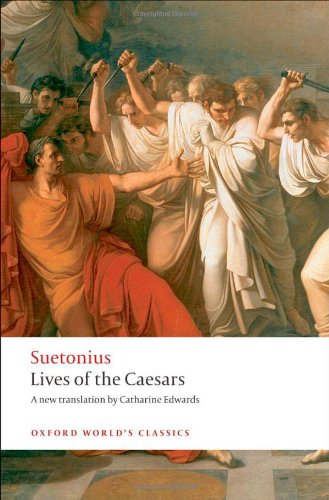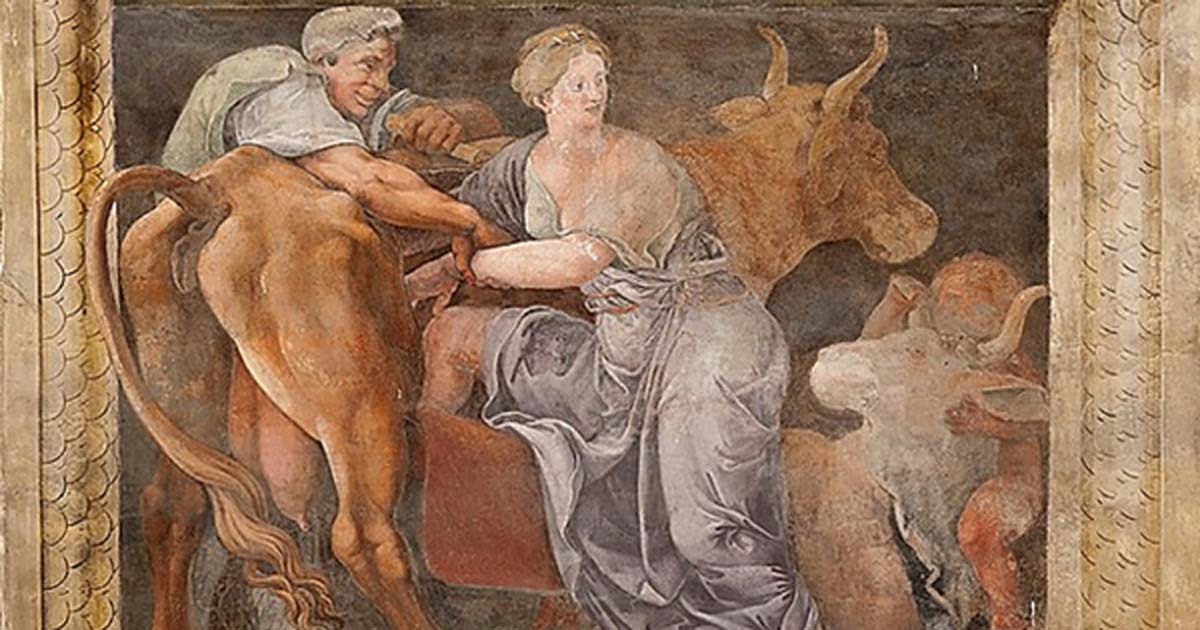 Anyone familiar with the gospel stories has noticed “bookending” or chiastic structure in certain episodes. Recall in the Gospel of Mark how Jesus passes by and curses a fruitless fig tree, goes to the temple to cause a ruckus, and then returns past the fig tree to see it has been withered.
Anyone familiar with the gospel stories has noticed “bookending” or chiastic structure in certain episodes. Recall in the Gospel of Mark how Jesus passes by and curses a fruitless fig tree, goes to the temple to cause a ruckus, and then returns past the fig tree to see it has been withered.
Fig tree cursed
Temple cleansed
Fig tree withered
Ditto for the raising of Jairus’s daughter:
Jairus begs Jesus to come and heal his daughter
A woman touches him on the way to be healed
Jesus raises Jairus’s daughter
There are many such structures, and some more complex than those examples. Some have further seen that the entire gospel is written as a ring structure:
John the Baptist in wild clothing announces Jesus
Baptism of Jesus, symbolic of death and new life
Casts demon out of man in synagogue
Transfiguration of Jesus
Casts money changers out of temple
Death and resurrection of Jesus
Young man in fine white linen announces resurrected Jesus
But there are many other steps in between extending that same pattern. Michael Turton has studied chiasms in the Gospel of Mark and over GMark as a whole. For Michael’s analysis see http://www.michaelturton.com/Mark/GMark_chiasm.html Another pattern pattern encompassing the entire gospel is discerned by Mary Ann Tolbert in Sowing the Gospel. There are numerous others.
Compare the Roman historian Suetonius
We would be wrong if we thought that these literary patterns were unique to the biblical literature, however. We might not be surprised to find such patterns in poetic works but what is surprising (at least it was to me) was to find the same type of ring structure in the prose history of the Roman historian Suetonius.
Suetonius was born around the time the Jerusalem temple was destroyed and wrote his Lives of the Twelve Caesars in the early part of the second century.
Here is one example, his life of the emperor Galba who succeeded Nero. The pattern I post here was discerned by the classicist Thomas Benediktson. Here is how he saw Suetonius’s structure in his biographical account of Galba. The numbers in brackets refer to the chapter sections of the work. They have been added by later editors so are not original to Suetonius.
Thematic Diagram of Suetonius’ Galba

A. Destruction of statues, Nero (1)
B. Mythological ancestors (2)
C. Father, gibber (3)
D.1. Greek quotation, presage (4.1)
D.2. Latin quotation, old age (4.1)
E. portents and dreams, Fortuna (4)
F.1. Marriage, lack of heirs (5)
F.2. Failure to collect inheritance (5)
G. Use of power (6)
H. canescere (8)
I. Cruelty as administrator (9)
J. Ascent to power (10-11)
I. saevitia, avaritia as emperor (12)
H. Canus(12.3)
G. Abuse of power (14-15)
F.2. Failure to pay donative (16)
F.1. Adoption of heir (17)
E. Portents and dreams, Fortuna (18-19)
D.2. Latin quotation, presage (20)
D.1. Greek quotation, youth (20)
C. Arthritis, caro (21)
B. Gluttony and excessive homosexuality (22)
A. Destruction of statues, Vespasian (23)
(Benediktson, p. 173)
Among the opening scenes is one of lightning striking the heads off the statues in the temple of the Caesars, an appropriate image coinciding with the death of Nero, the last of the Julio-Claudian emperors; in the final scene, the emperor Vespasian overturns a Senate decree to erect a statue of Galba.
A glance at some of those pairs (B and B) may leave you wondering if some sleight of hand is at work here. No. Rather, let’s look at the two Bs.
B. Mythological ancestors (2)
and
B. Gluttony and excessive homosexuality (22)
The mythological ancestors included Pasiphae, a woman punished by the gods so that she would crave to have sex with a bull and thence become the mother of the half bull half human minotaur creature.
and when he was emperor he even had in his entrance hall his family tree put on display, in which he traced back his father’s origins to Jupiter and those of his mother to Pasiphae the wife of Minos. (2)
So the two Bs speak of outrageous depravity in Galba’s ancestry and personal life.
The first C speaks of Galba’s father being a hunchback while the second C addresses an extreme case of arthritis inflicting Galba.
The double Ds contain a quotation in Greek and another in Latin; one referring to his old age and the other to his youth; one foretelling of his rise to power and the other of his demise. Especially cutting in its irony was Suetonius “recording” that the words Augustus spoke to the boy Galba began with the same words Julius Caesar uttered when Brutus betrayed and stabbed him:
some people relate that when Marcus Brutus came at him, he said in Greek, ‘You, too, my son? [= και σύ τέκνον]‘ [Julius Caesar, 82]
the emperor [Augustus] pinched his cheek and said: ‘You, too, child [= και σύ τέκνον], will have a taste of our imperial power.’ [Galba, 4]
The two H items are an artificial bracket linked by alliteration rather than meaning. Canescere refers to his greying hair; Canus is a flautist.
You get the idea, I trust. (Happy to answer any questions arising in comments.)
Obviously in order so carefully to structure a Life in such an artificial pattern we have to expect the author to be creative with his sources and known facts of the life of his subject. (Suetonius uses the same source that Plutarch and Tacitus used for their accounts of Galba.) Suetonius has long been considered one of the least reliable of historians, but Benediktson here shows us that Suetonius does know what he is doing, at least in the realm of literary artistry.
A more complex pattern or clusters of patterns have been uncovered in Suetonius’s Life of Nero but that post can wait for another day.
So when we next read and observe the way gospel beginnings presage gospel endings, and the geometric pattern shaping the work, we can be conscious of a work that was written according to certain fashions of that time.
Benediktson, D. Thomas. 1996. “Structure and Fate in Suetonius’ Life of Galba.” The Classical Journal 92 (2): 167–73.
If you enjoyed this post, please consider donating to Vridar. Thanks!

I am late to the party, but have two modest proposasl.
1) Instead of looking at the chiasm structure as a deliberate result of a unitary creative process, consider it the inadvertent artifact of successive interpolations or additions being plugged into the narrative.
Each layer of chiastic text represents another interpolation inserted into the text, thus resulting in the step like outline pattern.
Imagine “MARK” was writing on a scroll with his lines of text perpendicular to the scroll’s long axis (not in columns perpendicular to the scroll’s long axis, as was customary) Then he made a cut across the scroll created a break in the narrativem and pasted in a strip of papyrus with an interpolation, and did this over and over again throughout the text, ending up with a text that to modern analysis looks like stacks of chiastic chapters.
That is the chiasms are the result of his mechanical process of writing the text, in successive iterations of interpolations, and not as the result of an initial plan.
The gospel attributed to Mark, is a cut and paste construction by a hack writer, not the result of carefull planing and skillful literary technique
2) I think finding a chaistic pattern in Suetonius is pushing the envelope, or less kindly jumping the shark. I don’t think Suetonius was thinking 12 layers deep when he was composing the chapter about Galba. All but the best chess masters have difficulty thinking 12 iterations into the future.
Mark’s point in wrapping the fig incident around the temple incident seems to be that just as it is no longer the season for figs, it is also no longer the season for the temple, and so the temple cult is to be replaced by faith in Jesus.
The ring structure in Suetonius’s Galba did not require the literary equivalent of a chess master to compose. We have evidence, if I recall correctly, of architectural features being used as mnemonic aids, for example, for oral speeches. The gables on buildings would contain various decorative patterns and it was not difficult to keep in mind a series of topics associated with each of these so that there was a natural turning point in the centre or peak of the gable, and a progression towards the end that mirrored in order the topics that had led up to the middle of the composition. The conclusion easily matched or returned us to the beginning — a very common literary device then and today.